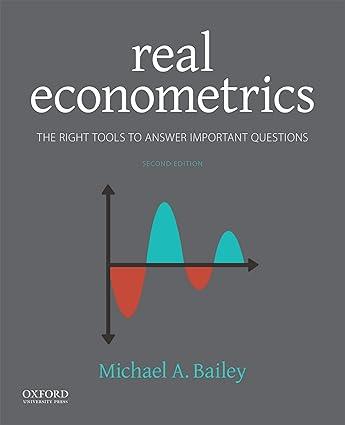How do young people respond to economic conditions? Are they more likely to pursue public service when
Question:
How do young people respond to economic conditions? Are they more likely to pursue public service when jobs are scarce? To get at this question, we'll analyze data in PeaceCorps.dta, which contains variables on state economies and applications to the Peace Corps. Table 8.9 lists the variables.
(a) Before looking at the data, what relationship do you hypothesize between these two variables? Explain your hypothesis.
(b) Run a pooled regression of Peace Corps applicants per capita on the state unemployment rate and year dummies. Describe and critique the results.
(c) Plot the relationship between the state economy and Peace Corps applications. Does any single state stick out? How may this outlier affect the estimate on unemployment rate in the pooled regression in part (b)? Create a scatterplot without the unusual state, and comment briefly on the difference from the scatterplot with all observations.
(d) Run the pooled model from part (b) without the outlier. Comment briefly on the results.
(e) Use the LSDV approach to run a two-way fixed effects model without the outlier. Do your results change from the pooled analysis? Which results are preferable?
(f) Run a two-way fixed effects model without the outlier; use the fixed effects command in Stata or R. Compare to the LSDV results.

Step by Step Answer:

Real Econometrics The Right Tools To Answer Important Questions
ISBN: 9780190857462
2nd Edition
Authors: Michael Bailey




